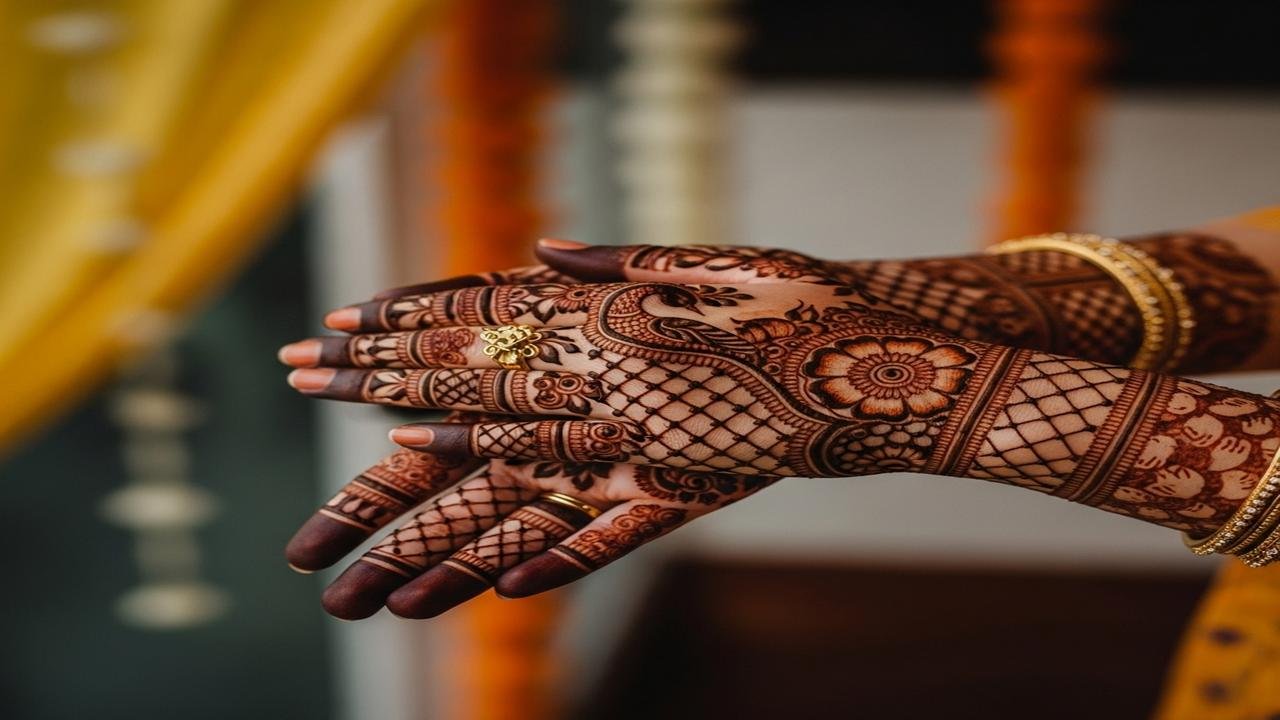What Your Mehendi Design Is Trying to Tell You

The Story Behind Applying Mehendi in Weddings
On a warm evening, the bride sits surrounded by family. Soft songs float through the air as hands move slowly, painting delicate patterns on her palms. The smell of crushed leaves and lemon rises like a blessing. This is mehendi — a silent story being written on skin, carrying wishes, prayers, and the weight of tradition.
Mehendi comes from the henna plant, a gift of the earth. For centuries, women have crushed its leaves into a paste and used it to color their hands and feet. In India, this practice became woven into wedding life long ago. The application is not only about beauty. It holds deep cultural and spiritual meanings that touch the heart.
At the heart of the ritual lies an offering of love. Families gather to celebrate the bride, to sing blessings and to slow down before the new life begins. The mehendi ceremony is often one of the first public joys of the wedding, a moment when women of different generations come together. Grandmothers hum old hymns. Young girls play. The act of applying mehendi becomes a shared prayer for health, prosperity, and a long marriage.
Why henna is sacred
Henna is plant-based and cooling. In practical terms, it soothes and protects the skin. Symbolically, it is linked to nature, fertility, and life’s renewal. In many homes, mehendi is seen as a way to invite the blessings of the earth and the gods into the marriage. The deepening color of the mehendi is often read as a sign of growing love and mutual respect between the couple.
Designs speak without words. Each motif carries a wish:
- Lotus: purity and spiritual growth.
- Peacock: beauty and grace.
- Sun and moon: eternal union, balance of energies.
- Hidden initials or faces: playful secrets about the groom arriving in the pattern.
Traditionally, brides had elaborate patterns that covered most of the hands and feet. Each curve and dot was placed with thought and blessing. Today, while styles vary, the intention remains the same — to honor the bride and to surround her with devotion.
Ritual and community
The mehendi ceremony is an act of community worship in its warmest form. Women sing devotional songs and folk tunes that bless the couple. Elders recall similar moments from their lives, passing down stories and simple prayers. This continuity connects the couple to their roots — to ancestors, to village customs, and to the small temple rituals that bless new beginnings.
There are also gentle superstitions that show how deeply people invest hope in these signs. A darker stain is said to mean deeper love. A long-lasting mehendi might signal a strong bond. Such beliefs are not strict rules but sweet threads of hope that add to the ceremony’s charm.
Modern meaning and mindful practice
Today, mehendi blends tradition with new meanings. Men sometimes receive simple designs. Brides choose minimalist styles, fusion patterns, or eco-friendly, chemical-free pastes. Artists use henna to celebrate not just marriage but festivals, births, and community joy. The ritual remains a reminder to slow down, to touch the earth’s simplicity, and to bless life’s changes.
The act of applying mehendi is almost meditative. For a moment, the world quiets. The bride and those around her breathe together, sing together, and bless together. In that stillness, the sacrament of love feels close and sacred.
Conclusion
Mehendi is more than a pretty stain; it is a living story of love, faith, and community. As the designs darken and fade with time, the blessings and shared memories they embody remain. May every pattern remind us that marriage is a gentle journey blessed by earth, song, and heartfelt prayer.
